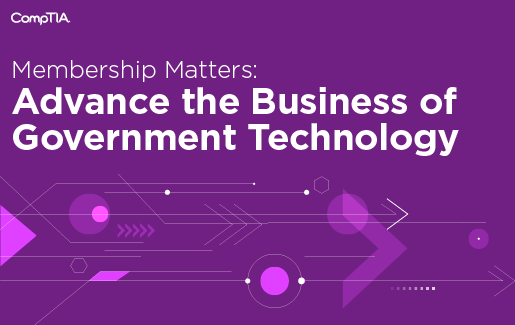
With business leaders and AI practitioners increasingly considering artificial to more effectively solve business problems, members of CompTIA’s Artificial Intelligence Advisory Council recently developed a detailed document that outlines the top questions that decision makers and AI practitioners should consider before implementing AI.
Rama Akkiraju, distinguished engineer and IBM Fellow, as well as chair of CompTIA’s AI Council, helped create the Artificial Intelligence in Business: Top Considerations Before Implementing AI document. She spoke with CompTIA to discuss the council’s intentions, the biggest misconceptions businesses have about implementing AI, and what decision makers should do after reading the council’s recommendations. Here’s what Akkiraju, who also received CompTIA’s Industry Advisory Council Leadership Award this year, had to say:
Why did you create the top considerations document?
In CompTIA, the focus for the Artificial Intelligence Advisory Council is to generate best practice documents for practitioners and business decision makers as they embark upon AI-infused projects and start to look at how AI can help optimize various things in their enterprises. What things should they be doing? What are the best practices and such? We wanted to generate a set of work products that would guide them on what to think, what questions to ask—related to data processes, technology, people skills, all of those things, and give some guidance on what it takes get to the level of maturity that they may want to get to, whatever level that may be.
What’s the biggest misconception businesses have about implementing AI?
There are promises being made that are unrealistic. Some companies or some folks are talking about AI like it’s magic. Hit a button and out comes a prediction that is correct 100% of the time and does not require any maintenance or new skills to manage. It will always stay fresh and always do the right thing. It will seamlessly integrate into my existing products and all that. I’m exaggerating, of course, a little bit, but probably not by too much.
We wanted to demystify that process a little bit, and start to really unravel it and say, “Look, AI is not magic.” But it has the potential to transform many industries significantly, and what it takes for that to happen is hard work, data, new skills, new roles within your organization to manage these models. It takes an understanding of how they work and then providing feedback, because they are not going to be perfect on day one.
 How should MSPs ramp up their AI solutions development and implementation skills?
How should MSPs ramp up their AI solutions development and implementation skills?
They have to do something different. AI, depending on what kind of an AI we are talking about, requires preparation, data preparation, or experts writing rules. There is going to be work that’s required on the part of whoever is developing it, whoever is deploying it, and whoever is managing it.
It is, in some ways, like traditional software application development and in some other ways it’s very different. You have to have clarity and understanding of what problem you’re solving, going back to the software engineering principles of requirements, and documenting the requirements. But in other cases, it’s actually very different from the traditional software engineering in the sense that you are now going to require new skills and new roles, like the data manager, to prepare data for AI. Or it may be the operations engineers who need to understand how AI works, that it is not always guaranteed to be 100% accurate, and that it takes iterations, additional data, feedback, and all that to help improve it. The service providers, the people who are deploying the models, they have to really understand these aspects associated with AI-based solution development and upgrade their skills accordingly to build and manage them.
After reading the top considerations document, what should businesses do next?
First, introspect their business processes and say, “Which one of my business processes can leverage and benefit from AI infusion? Where do I want to start? Which ones are the ones that I want to prioritize for this exploration or proof of concept?” Once they identify that in their own business processes, they can then start to look at various options.
There may be a known set of companies or vendors that are already offering solutions for optimizing this particular business process. If so, maybe create a request for proposals, so that you can learn from all their presentations and proposals on what they can do. Then you can decide whether you want to have an internal data science team do the evaluations and/or in-house development or use one of the vendors who had made a proposal to do a proof of concept. I highly recommend doing some initial proofs of concept to get a good sense of what the possibilities are. What is the art of the possible?
Once you have some results you can see how they fit in and whether or not they would be acceptable in the particular business process. Is it showing improvements to the metrics that you care about? Then, you can start to think about deploying it slowly. Do the one deployment in one process to see how it works. What is the life cycle like? Once you observe it, you build a pipeline of doing proofs of concept in other ones and slowly expand out. That would be how I would go about it after considering the top considerations.
Interested in Artificial Intelligence?
Join CompTIA’s AI Technology Interest Group where you can share ideas, join discussions, discover relevant resources, and network with AI-focused experts and peers in the industry.


 Add CompTIA to your favorite RSS reader
Add CompTIA to your favorite RSS reader

